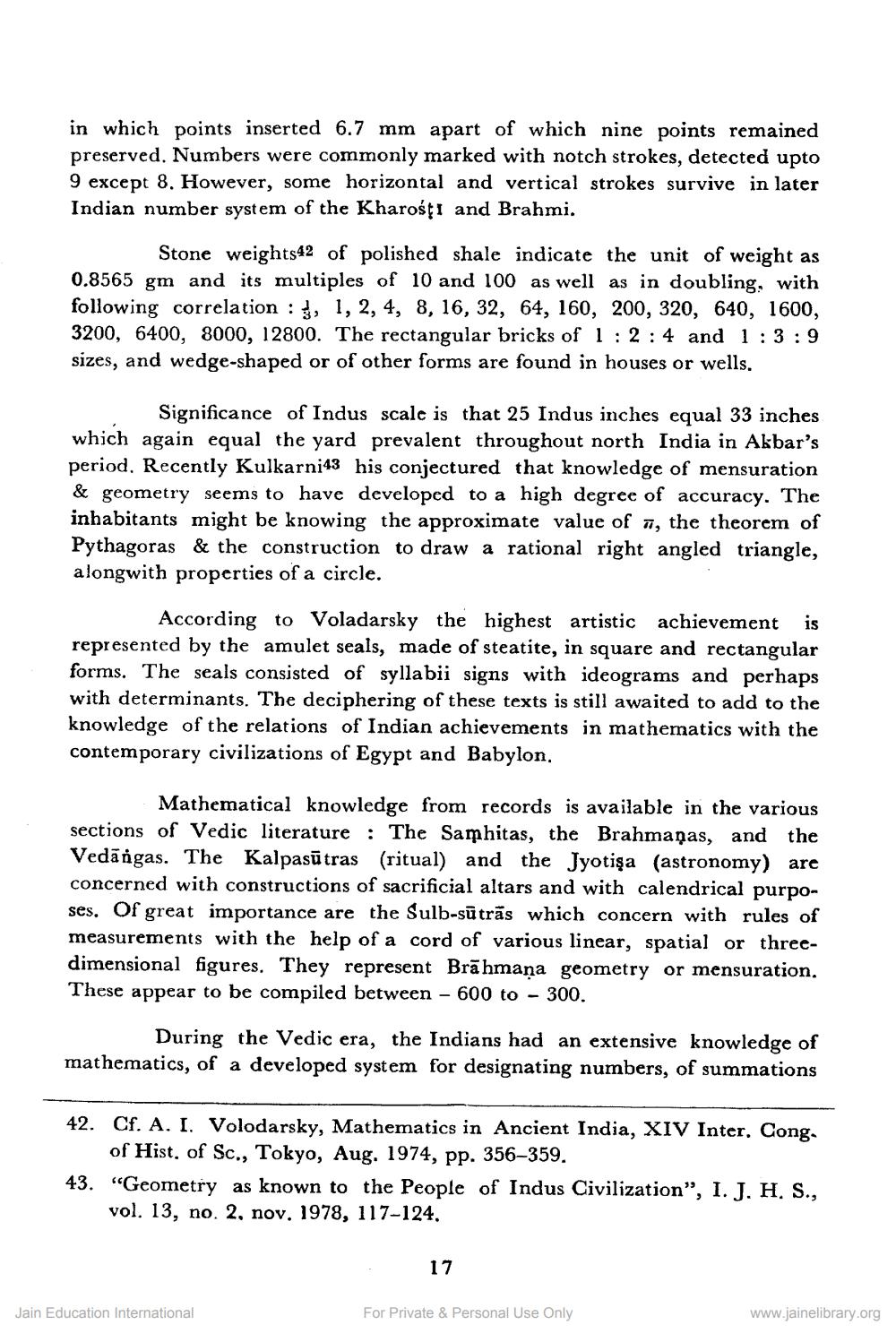________________
in which points inserted 6.7 mm apart of which nine points remained preserved. Numbers were commonly marked with notch strokes, detected upto 9 except 8. However, some horizontal and vertical strokes survive in later Indian number system of the Kharośţi and Brahmi.
Stone weights42 of polished shale indicate the unit of weight as 0.8565 gm and its multiples of 10 and 100 as well as in doubling, with following correlation : 5, 1, 2, 4, 8, 16, 32, 64, 160, 200, 320, 640, 1600, 3200, 6400, 8000, 12800. The rectangular bricks of 1:2 : 4 and 1:3:9 sizes, and wedge-shaped or of other forms are found in houses or wells.
Significance of Indus scale is that 25 Indus inches equal 33 inches which again equal the yard prevalent throughout north India in Akbar's period. Recently Kulkarni43 his conjectured that knowledge of mensuration & geometry seems to have developed to a high degree of accuracy. The inhabitants might be knowing the approximate value of 7, the theorem of Pythagoras & the construction to draw a rational right angled triangle, alongwith properties of a circle.
According to Voladarsky the highest artistic achievement is represented by the amulet seals, made of steatite, in square and rectangular forms. The seals consisted of syllabii signs with ideograms and perhaps with determinants. The deciphering of these texts is still awaited to add to the knowledge of the relations of Indian achievements in mathematics with the contemporary civilizations of Egypt and Babylon,
Mathematical knowledge from records is available in the various sections of Vedic literature : The Samhitas, the Brahmaņas, and the Vedāngas. The Kalpasūtras (ritual) and the Jyotişa (astronomy) are concerned with constructions of sacrificial altars and with calendrical purposes. Of great importance are the Sulb-sūtrās which concern with rules of measurements with the help of a cord of various linear, spatial or threedimensional figures. They represent Brāhmana geometry or mensuration. These appear to be compiled between - 600 to - 300.
During the Vedic era, the Indians had an extensive knowledge of mathematics, of a developed system for designating numbers, of summations
42. Cf. A. I. Volodarsky, Mathematics in Ancient India, XIV Inter. Cong.
of Hist, of Sc., Tokyo, Aug. 1974, pp. 356–359. 43. “Geometry as known to the People of Indus Civilization”, I. J. H. S.,
vol. 13, no. 2, nov, 1978, 117-124,
17
Jain Education International
For Private & Personal Use Only
www.jainelibrary.org




